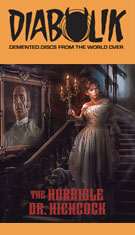
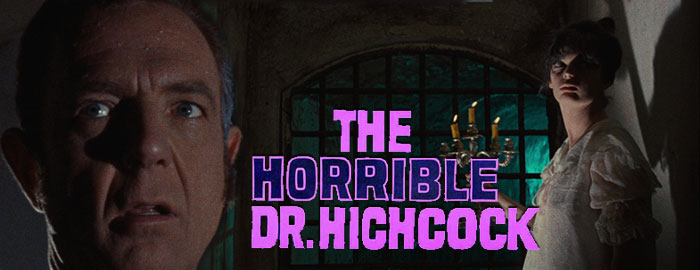
Color, 1962, 87 mins. 29 secs. /
Directed by Riccardo Freda
Starring Barbara Steele, Robert Flemyng, Montgomery Glenn (Silvano Tranquilli), Harriet White Medin, Maria Teresa Vianello
Vinegar Syndrome (UHD & Blu-ray) (US R0/RA 4K/HD), Radiance (Blu-ray) (UK RB HD), Ostalgica (Blu-ray & DVD) (Germany RB/R2 HD/PAL), Olive Films (Blu-ray) (US RA HD), Artus (DVD) (France R2 PAL) / WS (1.85:1) (16:9)
One of the key films of the 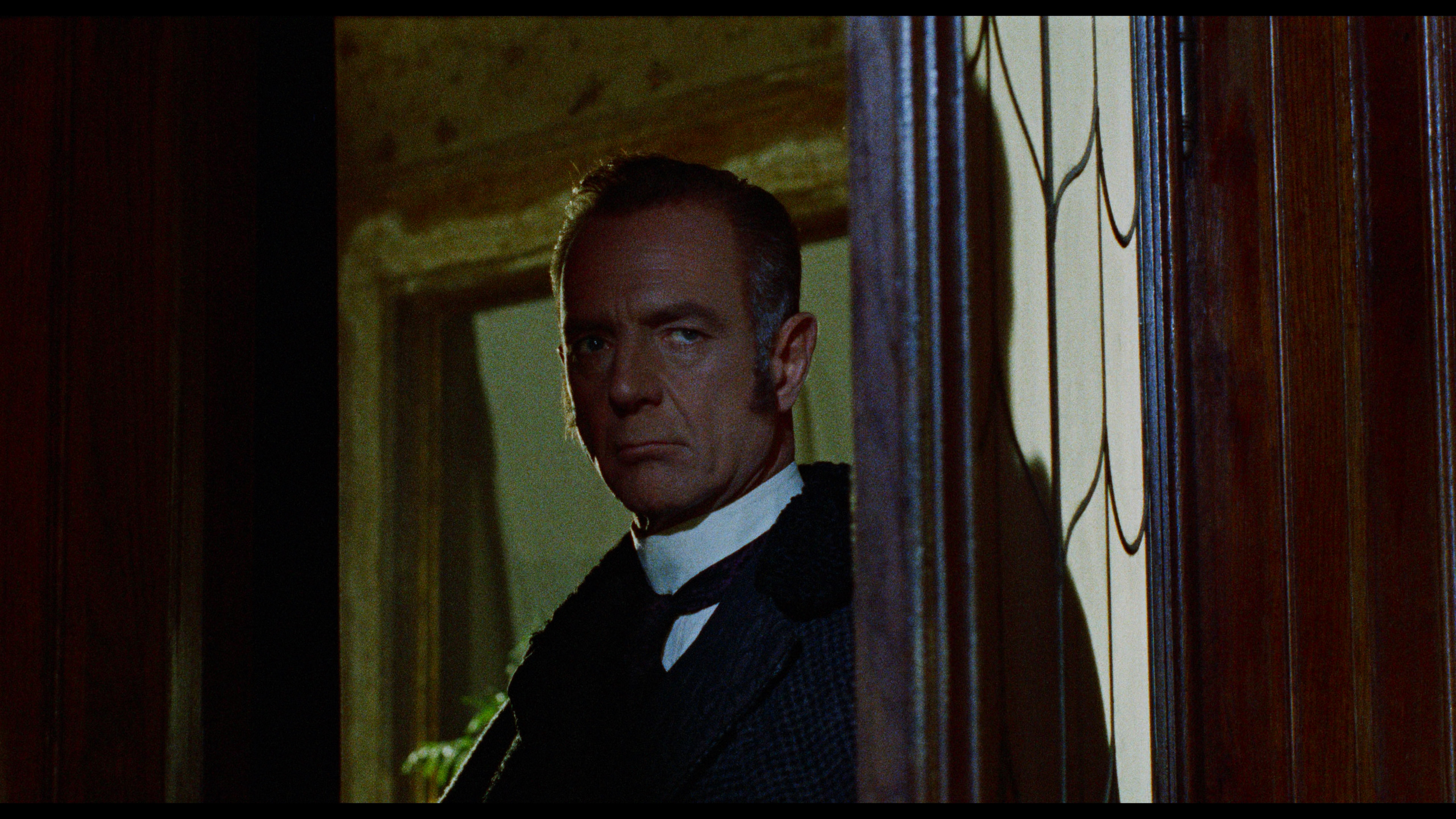 classic Italian Gothic horror wave, The Horrible Dr. Hichcock (originally L'Orribile
classic Italian Gothic horror wave, The Horrible Dr. Hichcock (originally L'Orribile 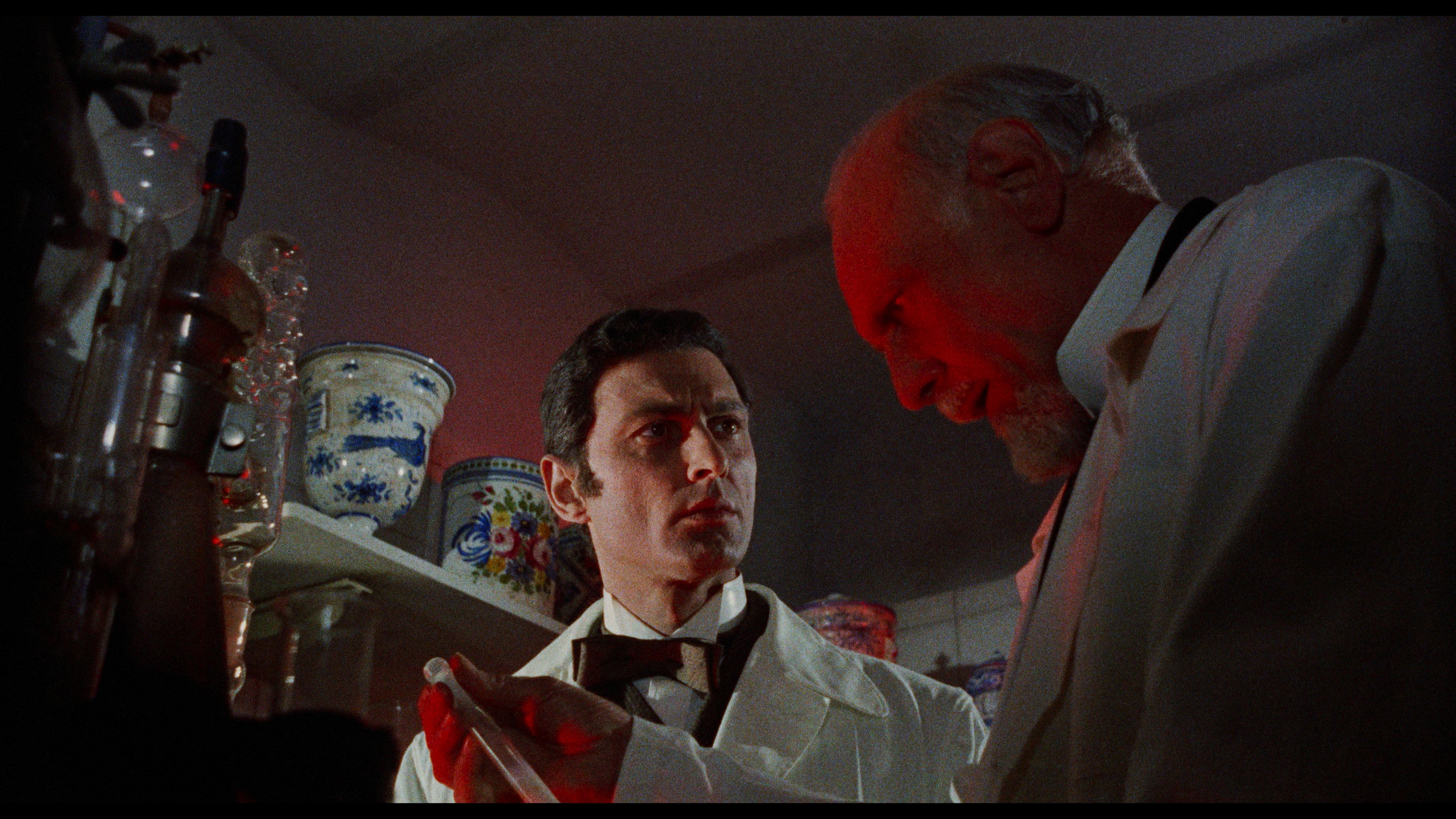 Segreto del Dr. Hichcock) is arguably the finest film by Riccardo Freda, an intermittent contributor to the genre who had kicked off the Italian horror genre in the sound era with I Vampiri. That film had featured major uncredited contributions by Mario Bava, the most important artist of Italian cinematic horror in the 1960s starting with Black Sunday, but Freda was on his heels by helming two films with that film's star, Barbara Steele (this one and its sort-of alternate universe sequel, The Ghost). Essentially updating the tried-and-true potboiler plot of a new bride finding out her husband has nefarious plans going on at night behind closed doors, Hichcock adds a relatively extreme new element by making its villain a necrophile whose antics made it an adults-only horror film at a time titles like these were aimed at younger audiences. The film was heavily streamlined by the time it reached U.S. theaters from short-lived company Sigma III on a glorious double feature with Jess Franco's The Awful Dr. Orlof, eventually going to Republic for TV which led to its current U.S. ownership by Paramount. The shortened U.S. cut was the default version most viewers could see until the uncut 87-minute version turned up on VHS from semi-PD company Sinister Cinema in the late '80s as The Terror of Dr. Hichcock, while written scholarship has piled up about this film in recent years cementing its status as a major work of dizzying, censorship-baiting opulent horror.
Segreto del Dr. Hichcock) is arguably the finest film by Riccardo Freda, an intermittent contributor to the genre who had kicked off the Italian horror genre in the sound era with I Vampiri. That film had featured major uncredited contributions by Mario Bava, the most important artist of Italian cinematic horror in the 1960s starting with Black Sunday, but Freda was on his heels by helming two films with that film's star, Barbara Steele (this one and its sort-of alternate universe sequel, The Ghost). Essentially updating the tried-and-true potboiler plot of a new bride finding out her husband has nefarious plans going on at night behind closed doors, Hichcock adds a relatively extreme new element by making its villain a necrophile whose antics made it an adults-only horror film at a time titles like these were aimed at younger audiences. The film was heavily streamlined by the time it reached U.S. theaters from short-lived company Sigma III on a glorious double feature with Jess Franco's The Awful Dr. Orlof, eventually going to Republic for TV which led to its current U.S. ownership by Paramount. The shortened U.S. cut was the default version most viewers could see until the uncut 87-minute version turned up on VHS from semi-PD company Sinister Cinema in the late '80s as The Terror of Dr. Hichcock, while written scholarship has piled up about this film in recent years cementing its status as a major work of dizzying, censorship-baiting opulent horror.
The seemingly respectable Dr. Bernard Hichcock (Flemyng) moves smoothly in London's high society in the late 1800s, supported by the hospitable elegance 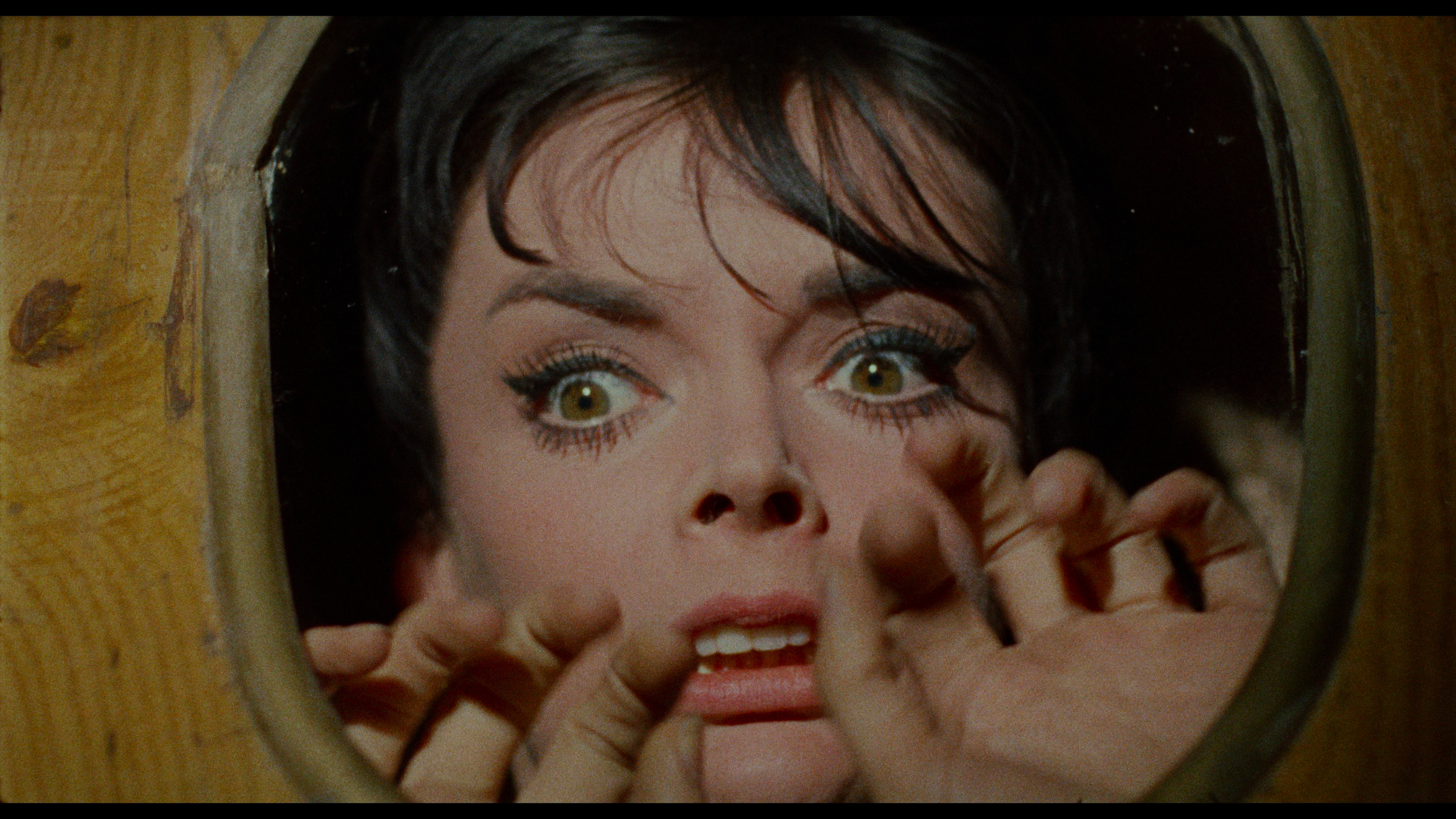 of his wife, Margaretha (Vianello). However, as we see from the opening moments, he has an extremely dark secret, namely his sexual fondness for the dead bodies of beautiful women. That includes surreptitious activities at work and his nocturnal
of his wife, Margaretha (Vianello). However, as we see from the opening moments, he has an extremely dark secret, namely his sexual fondness for the dead bodies of beautiful women. That includes surreptitious activities at work and his nocturnal 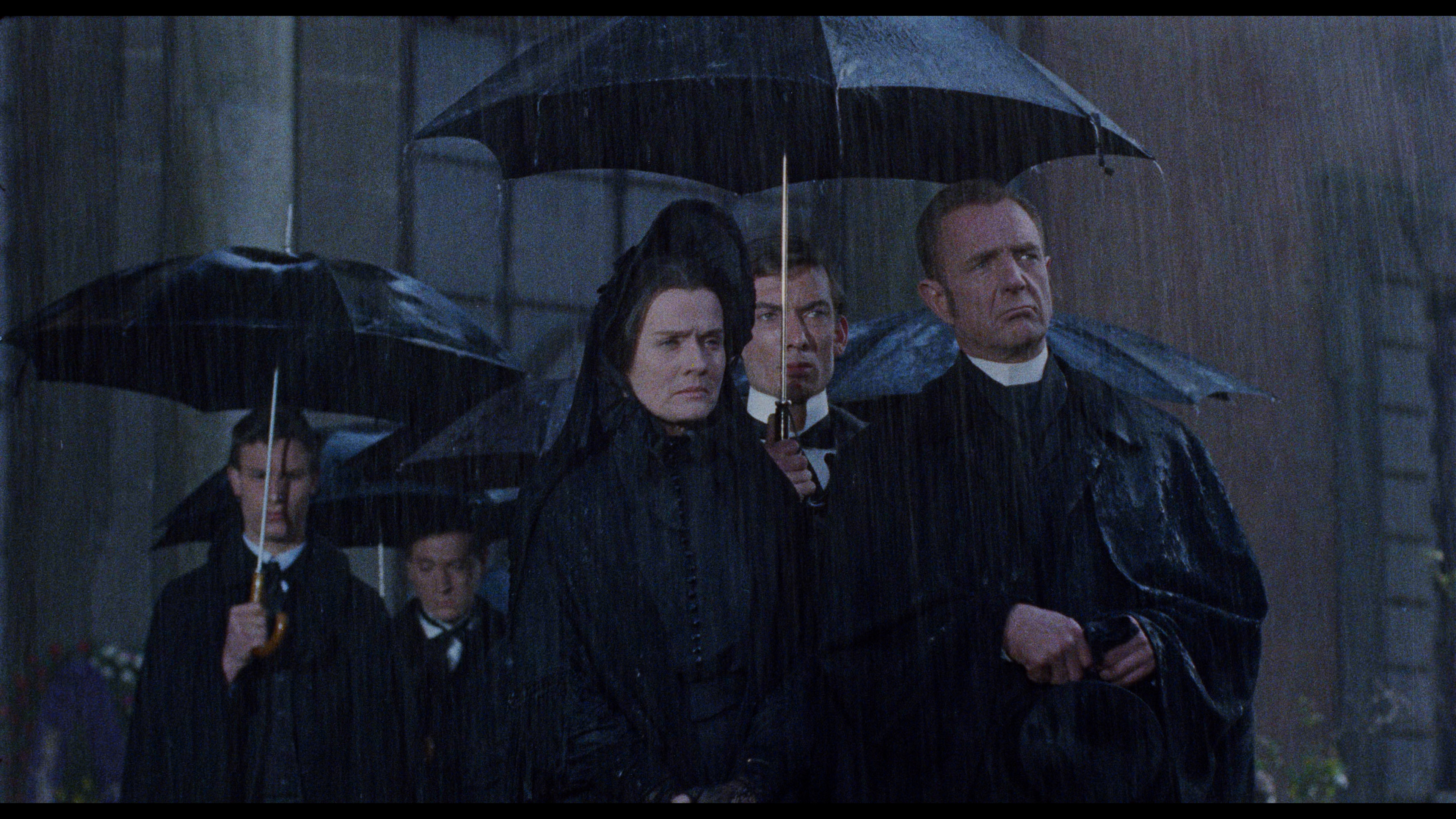 habit of drugging his wife with a powerful anesthetic he's developed that can simulate the absence of life. When one of their quasi-funeral bedroom sessions goes awry, Hichcock buries his wife and spends over a decade away from home. He only returns upon marrying the young Cynthia (Steele), who has been a nervous wreck since the death of her father, and she's understandably apprehensive about living in a mansion with a sneaky necrophile husband and an equally unsettling housekeeper (Medin). Meanwhile Cynthia finds support from another doctor, the handsome and younger Dr. Kurt Lowe (Castle of Blood's Tranquilli), or Dr. Lang depending which version you watch. Fearing her husband might be trying to bump her off, Cynthia eventually comes to realize that something even more twisted could be in store for her...
habit of drugging his wife with a powerful anesthetic he's developed that can simulate the absence of life. When one of their quasi-funeral bedroom sessions goes awry, Hichcock buries his wife and spends over a decade away from home. He only returns upon marrying the young Cynthia (Steele), who has been a nervous wreck since the death of her father, and she's understandably apprehensive about living in a mansion with a sneaky necrophile husband and an equally unsettling housekeeper (Medin). Meanwhile Cynthia finds support from another doctor, the handsome and younger Dr. Kurt Lowe (Castle of Blood's Tranquilli), or Dr. Lang depending which version you watch. Fearing her husband might be trying to bump her off, Cynthia eventually comes to realize that something even more twisted could be in store for her...
Though the script for Hichcock doesn't allow Steele to show as much range as some of her other Italian horror films, she's a glorious presence here in one of the few Italian productions to capture her in full-blooded color. Freda and screenwriter Ernesto Gastaldi pile on the thriller elements here with wild abandon, especially the frenzied (and fiery) climax, while the implied necrophilia manages to stay within the confines of good taste while giving the proceedings a sickly veneer throughout. Adding to the fun is a swirling, clever score by Roman Vlad, who had earlier handled composer duties on I Vampiri, and the film makes audacious use of color gel lighting in sparing but effective moments of high terror.
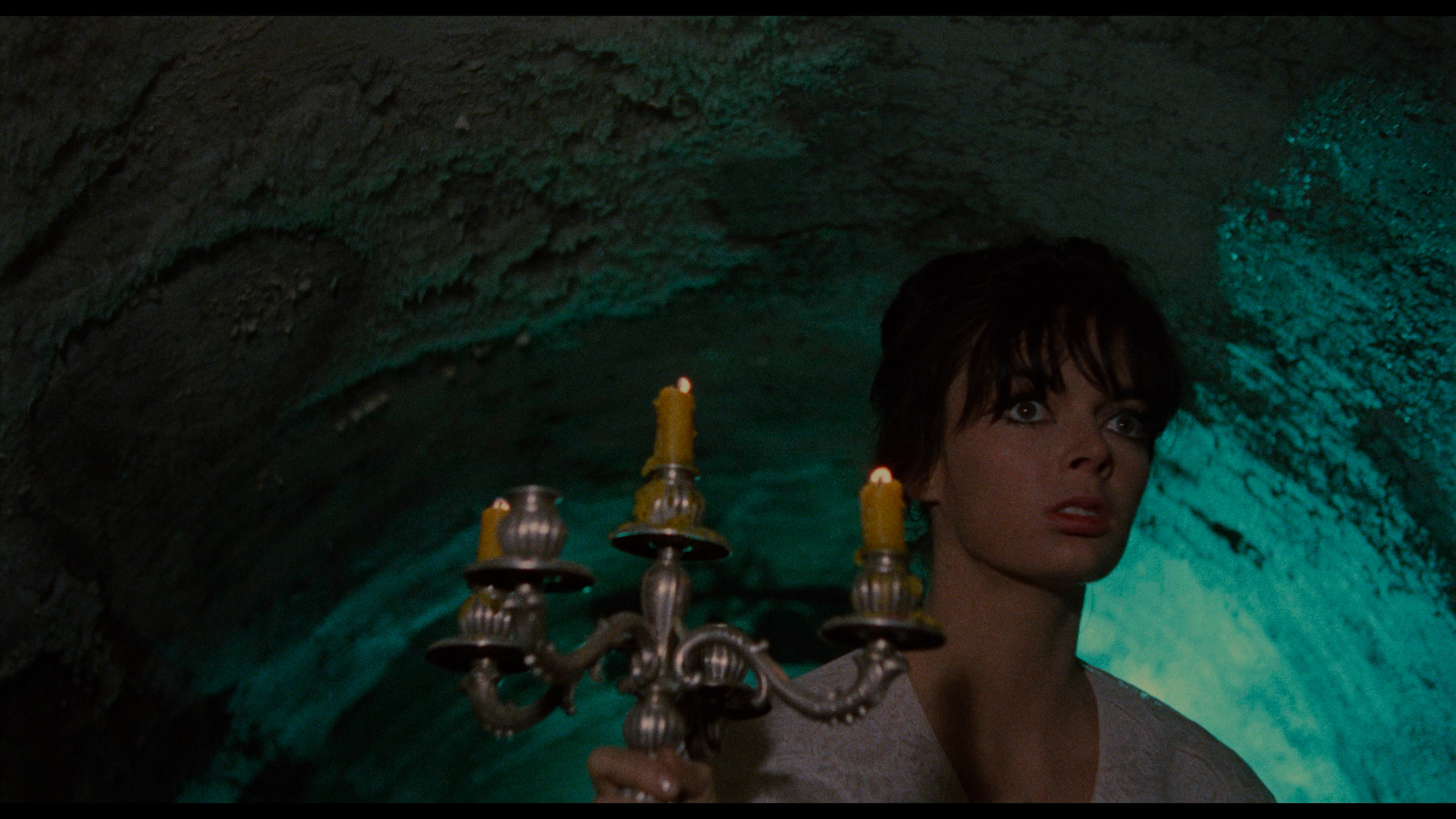 The home video history of this film is a peculiar one, with both the U.S. and European cuts issued on VHS unofficially
The home video history of this film is a peculiar one, with both the U.S. and European cuts issued on VHS unofficially 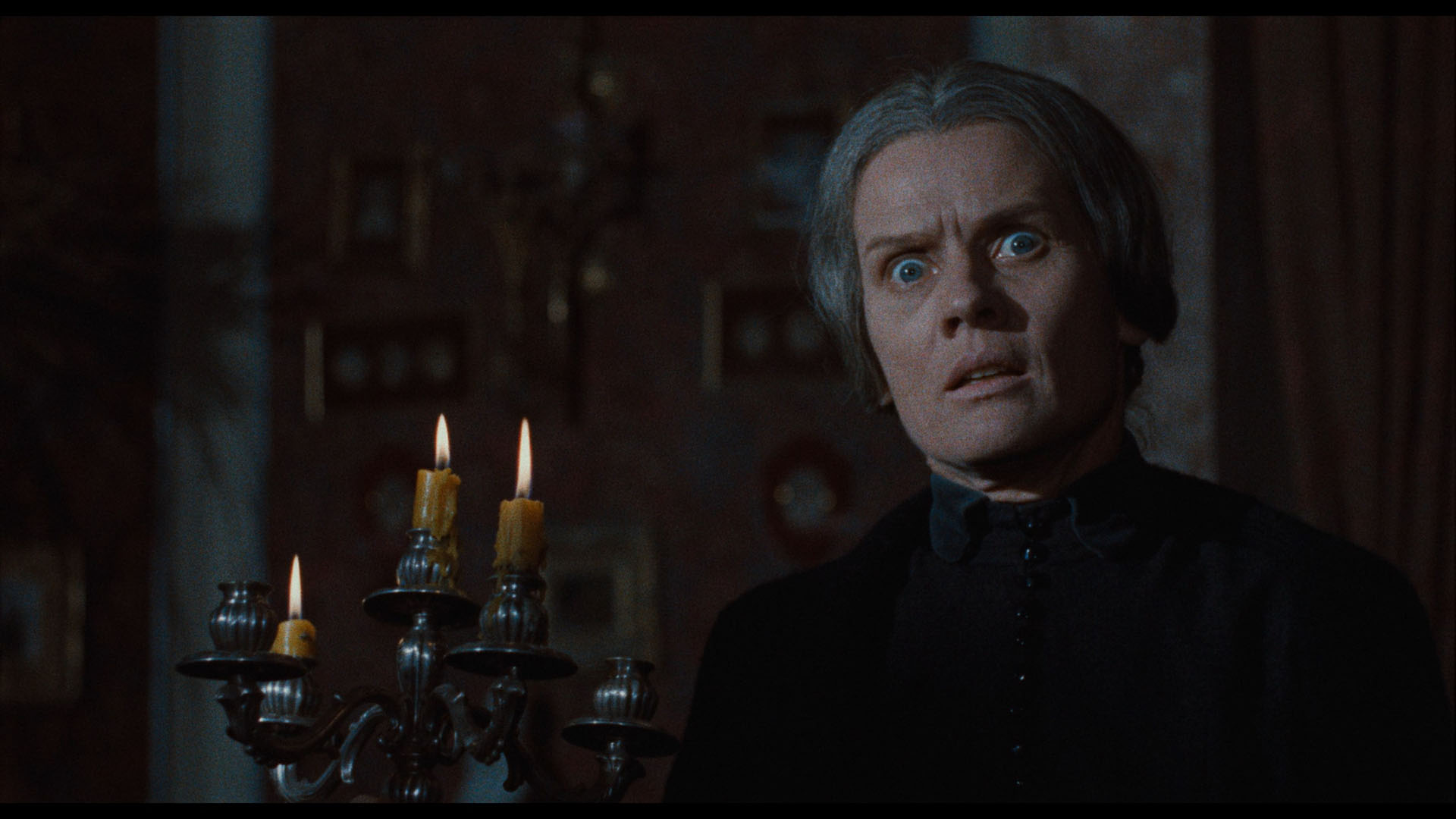 and a tape eventually put out officially by Republic. A French DVD in 2010 was a visual step up but had no English-friendly options, while a 2016 Blu-ray from Olive Films via licensor Paramount only contained the shorter U.S. cut from an okay film source. It's worth noting though that the U.S. version has its points of interest in the way it shuffles the footage around (including the very opening seconds) and integrates what may be outtake footage from the original shoot. A 2018 Blu-ray and DVD combo edition from Ostalgica in Germany featured the German and Italian audio tracks with optional German subtitles, plus German audio commentary by Lars Dreyer-Winkelmann, a "Features of the Gothic" featurette (27m7s), a 4-minute gallery, and the Italian and French trailers. One big plus in this release's favor is the fact that it includes a soundtrack CD of Vlad's score (33 tracks, 59 mins.), which is unavailable anywhere else.
and a tape eventually put out officially by Republic. A French DVD in 2010 was a visual step up but had no English-friendly options, while a 2016 Blu-ray from Olive Films via licensor Paramount only contained the shorter U.S. cut from an okay film source. It's worth noting though that the U.S. version has its points of interest in the way it shuffles the footage around (including the very opening seconds) and integrates what may be outtake footage from the original shoot. A 2018 Blu-ray and DVD combo edition from Ostalgica in Germany featured the German and Italian audio tracks with optional German subtitles, plus German audio commentary by Lars Dreyer-Winkelmann, a "Features of the Gothic" featurette (27m7s), a 4-minute gallery, and the Italian and French trailers. One big plus in this release's favor is the fact that it includes a soundtrack CD of Vlad's score (33 tracks, 59 mins.), which is unavailable anywhere else.
In 2023, Radiance released the first truly worthy, English-friendly edition of the uncut version of the film as a two-disc Blu-ray set in the U.K. with a second disc devoted to the U.S. Horrible Dr. Hichcock version for comparison. The main version on disc one can be played in its Italian or English versions, the latter under the title Raptus - The Secret of Dr. Hichcock, and with the respective language insert shots for elements like newspaper headlines. This new 2K restoration from the negative is a radical improvement over the German Blu-ray, with more image info and detail. Most significantly, the German Blu-ray had no color timing applied which resulted in skin tones and entire color temperatures shifting from shot to shot and eliminating any of the intended day-for-night filters. Here that's all been corrected, resulting in a more stable and enjoyable viewing experience. (See the second frame grab comparison below for one glaring example.) The DTS-HD MA 2.0 mono tracks are all in excellent shape, with optional English SDH or translated subtitles provided. Note that early in the film when Mrs. Hichcock ends the dinner party, the English dub features an awkward reverb effect resulting in some odd audio echoing for a few seconds that has always been present in that track. An audio commentary by Kat Ellinger and Annie Rose Malamet goes into the Italian Gothic, the role of the Apollonian male here versus other horror films, connections to Hitchcock films, visual and narrative perversity, and how this varies from Hammer films of the era. A second commentary by Tim Lucas is an interesting variation on his usual approach as he opens by noting that  this track evolved from
this track evolved from 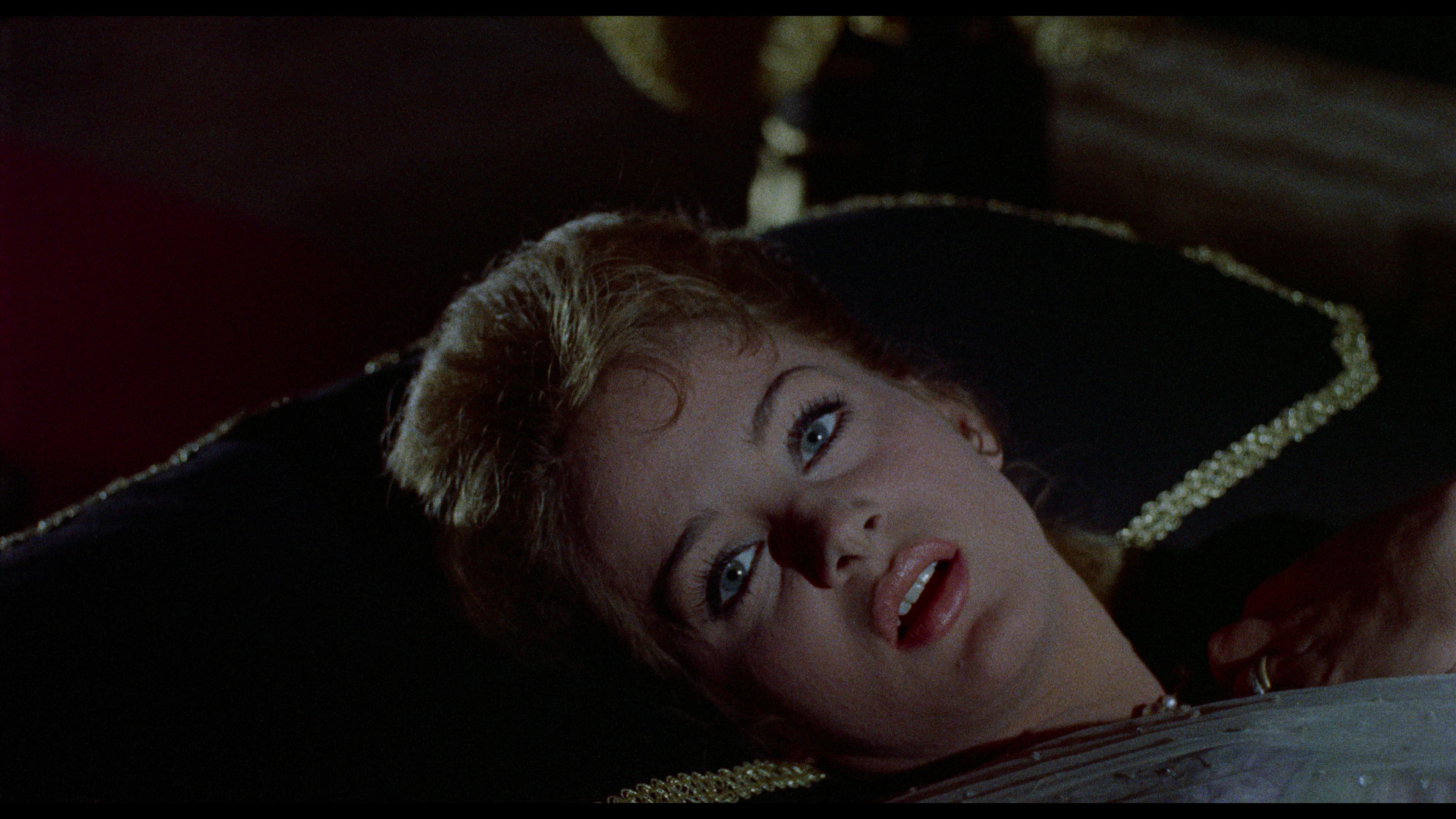 what was intended to be an updating of his original Video Watchdog article about the variant versions of the film, here delivering his greatly expanded 25-page study as a track packed with detailed info about Gastaldi's written novelization versus the two release versions. He also posits a fascinating theory behind what might have been the attraction that led our unhappy couple to tie the knot. A new interview with Gastaldi (34m19s) covers his initial early collaborations with Freda, the speedy writing of the script, his own take on the inspiration for the necrophilia aspect (disputed elsewhere by Freda), and the difference in color horror films here versus the more common monochrome that went in and out during the decade. In "Murderous Husbands: Bluebeard and the Gothic Melodrama" (28m17s), Miranda Corcoran presents a video essay about the Bluebeard story and its various incarnations throughout Gothic film including '40s melodramas like Gaslight and Jane Eyre before parsing out its influence on this film. Finally an interview with Madeleine Le Despencer looks at the confluence of necrophilia and Gothic narratives in this film, The Monk, and others, as well as mortuary chic in 19th-century Europe. Also included are a gallery of international poster art and a subtitled Italian trailer, while the package comes with an insert booklet featuring a new essay by Chris Fujiwara, an archival article by the late Alan Y. Upchurch, Lucas and Luigi Boscaino featuring interviews with Freda, Steele, Flemyng and others, and a critical overview by Cullen Gallagher.
what was intended to be an updating of his original Video Watchdog article about the variant versions of the film, here delivering his greatly expanded 25-page study as a track packed with detailed info about Gastaldi's written novelization versus the two release versions. He also posits a fascinating theory behind what might have been the attraction that led our unhappy couple to tie the knot. A new interview with Gastaldi (34m19s) covers his initial early collaborations with Freda, the speedy writing of the script, his own take on the inspiration for the necrophilia aspect (disputed elsewhere by Freda), and the difference in color horror films here versus the more common monochrome that went in and out during the decade. In "Murderous Husbands: Bluebeard and the Gothic Melodrama" (28m17s), Miranda Corcoran presents a video essay about the Bluebeard story and its various incarnations throughout Gothic film including '40s melodramas like Gaslight and Jane Eyre before parsing out its influence on this film. Finally an interview with Madeleine Le Despencer looks at the confluence of necrophilia and Gothic narratives in this film, The Monk, and others, as well as mortuary chic in 19th-century Europe. Also included are a gallery of international poster art and a subtitled Italian trailer, while the package comes with an insert booklet featuring a new essay by Chris Fujiwara, an archival article by the late Alan Y. Upchurch, Lucas and Luigi Boscaino featuring interviews with Freda, Steele, Flemyng and others, and a critical overview by Cullen Gallagher.
In early 2024, Vinegar Syndrome presented the global UHD debut of the film with a double-disc set featuring a 4K UHD and a Blu-ray, both featuring a new, different restoration that marks the most impressive presentation of the film to date. Both discs feature the complete European cut of the film (with Italian credits) featuring English and Italian DTS-HD MA 2.0 mono audio with optional English SDH or translated subtitles, plus the reworked U.S. cut; the alternate Raptus titles are included as an extra on the Blu-ray. The UHD in particular looks stunning with the benefits of HDR bringing out some wild gradations in those dark scenes highlighted with gel lighting, and the film grain has been left intact with excellent detail. An audio commentary with Eugenio Ercolani, Troy Howarth, and this writer can't be evaluated here obviously, but hopefully it will prove enjoyable. In "The Horrible Dr. Freda" (20m16s), second assistant director Marcello Avallone presents an overall portrait of the director including his passion for horses, his working methods, the "family-like" atmosphere of filmmaking at the time, and lots of other tales from the set. Then "The Most Honorable Julyan Perry" (30m35s) features Gastaldi giving his account of being approached by the producers to write a scary Gothic-style giallo, the frequency of having his scripts turned into films much later with different titles, the rapid eight-day shoot for this film (which necessitated tossing out the last few pages of the script), and some of the crazier demands he got as a writer in the early days. "Necropolises and Necrophiliacs" (16m33s) brings back Avallone for a more general rumination of classic Italian horror, recorded at a suitably spooky, death-laden location in Tuscany and tying in some recurring themes to his own work like Specters. Steele herself appears for a scene select commentary track (26m28s) in conversation with Russ Lanier about her positive memories of working with the tempestuous Freda, the making of this film dovetailing with her work on Fellini's 8 1/2, the "shaky" state of the script, and the lengthy shooting days on such a speedy schedule. Also included are the subtitled Italian trailer and a 1m29s gallery of lobby cards and posters.
Vinegar Syndrome (UHD)
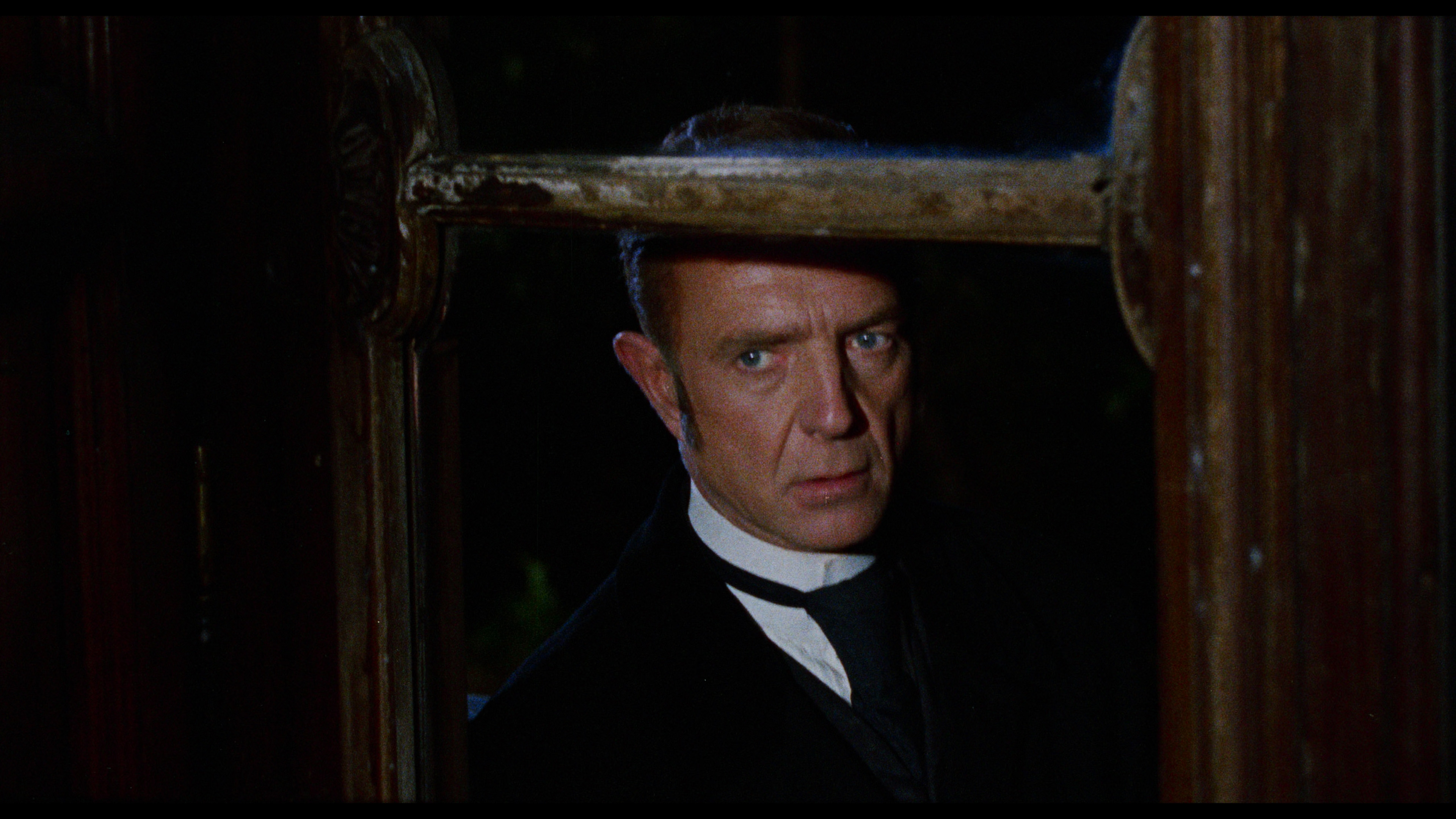
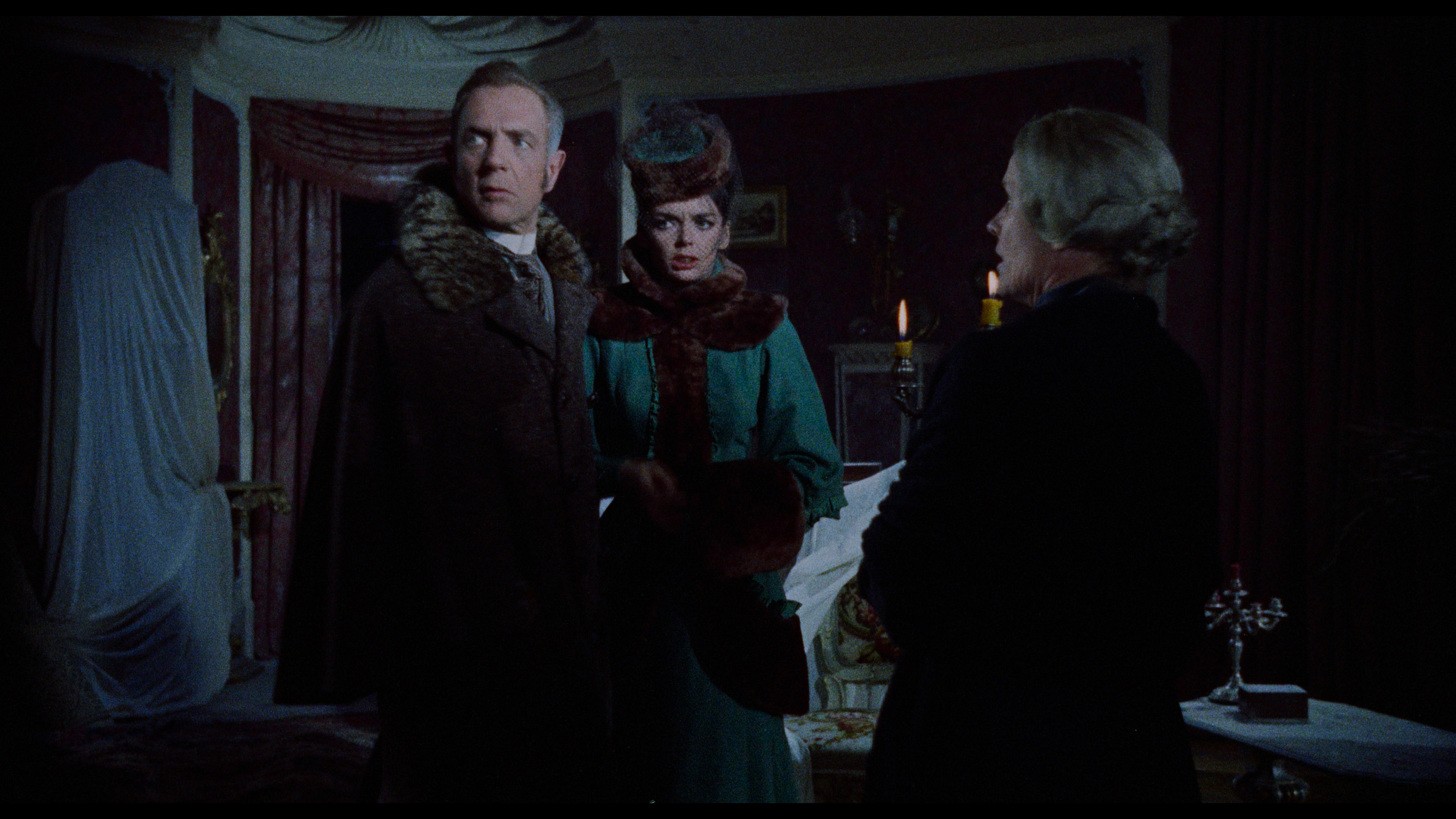
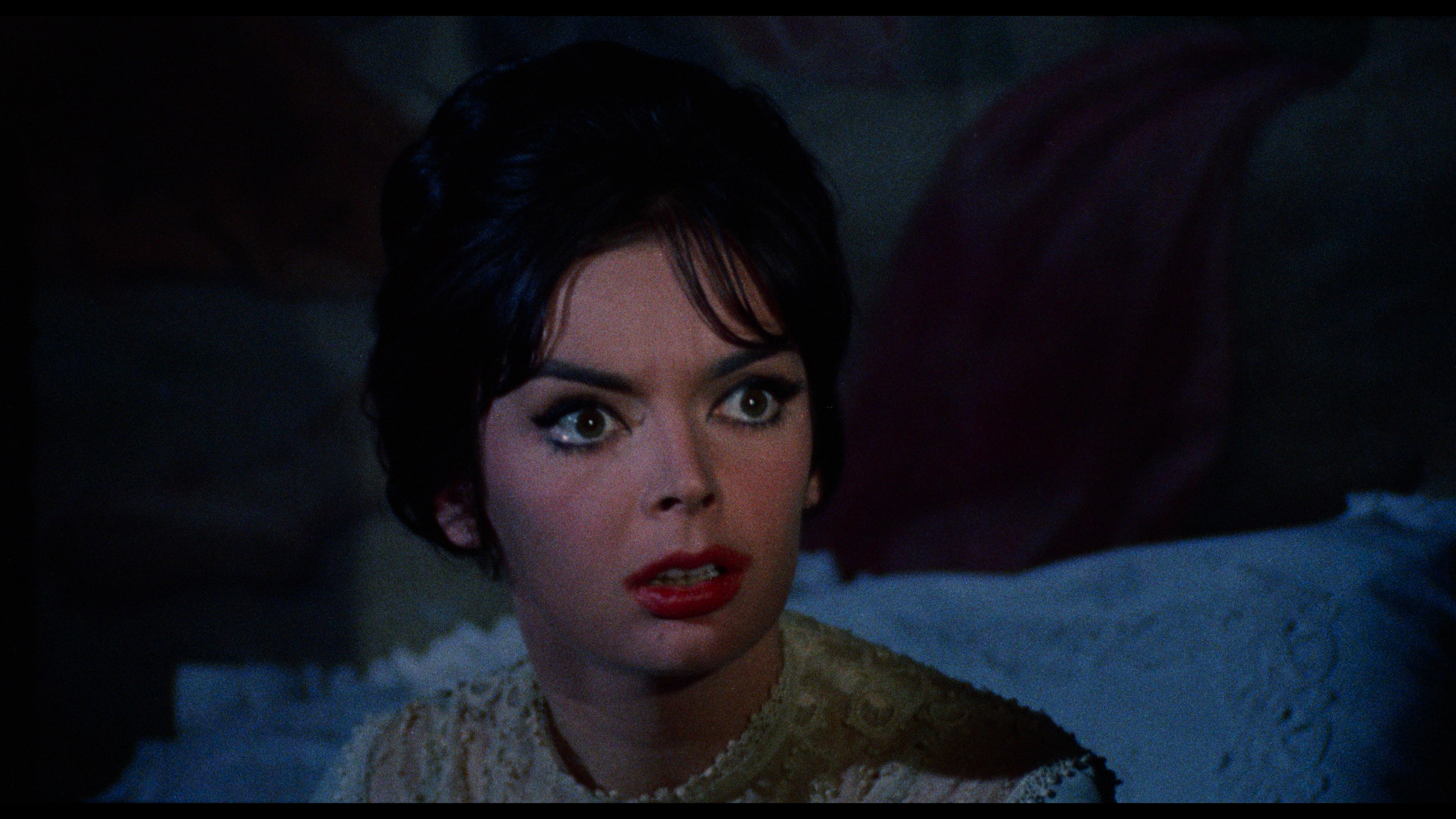
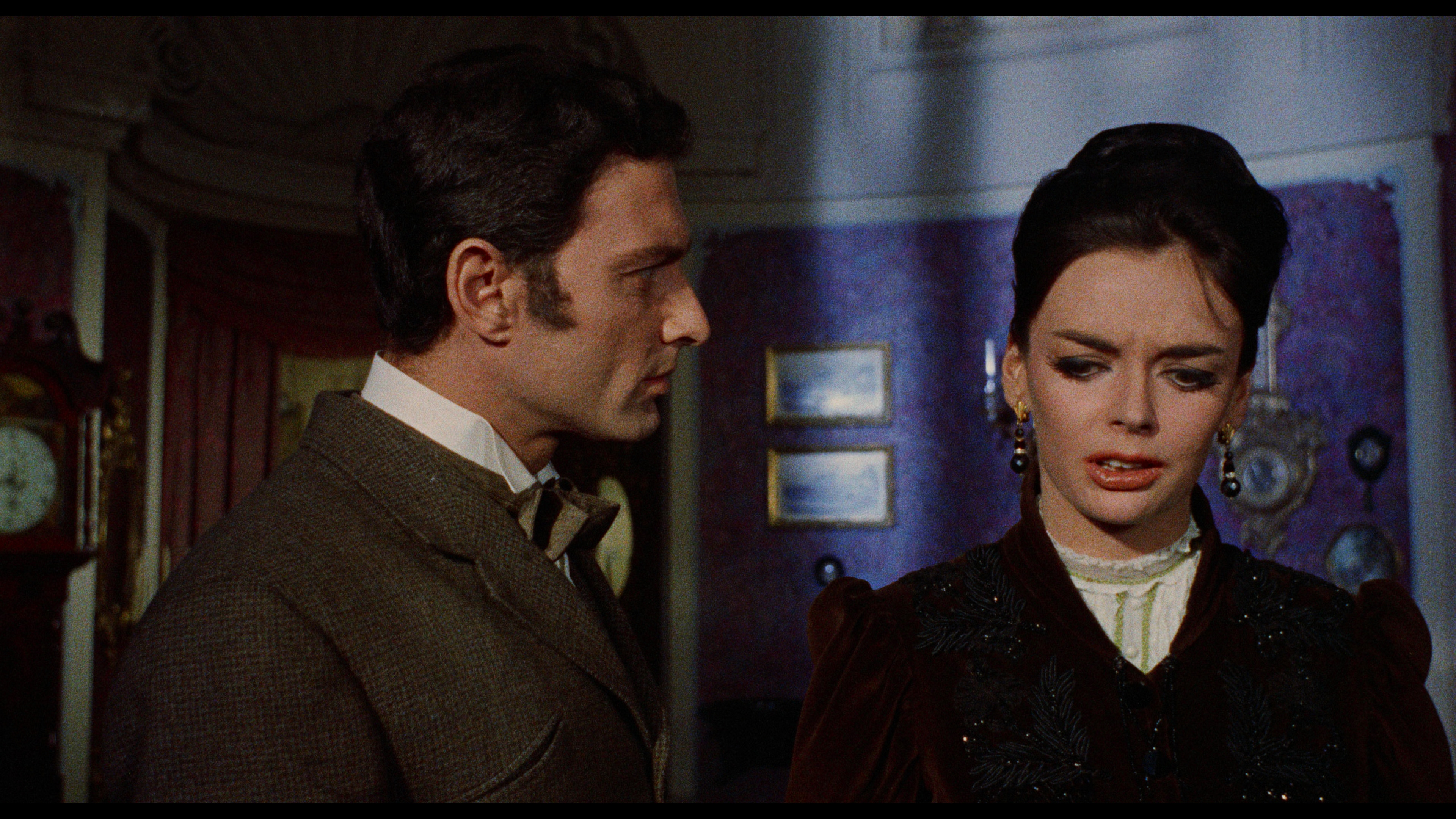
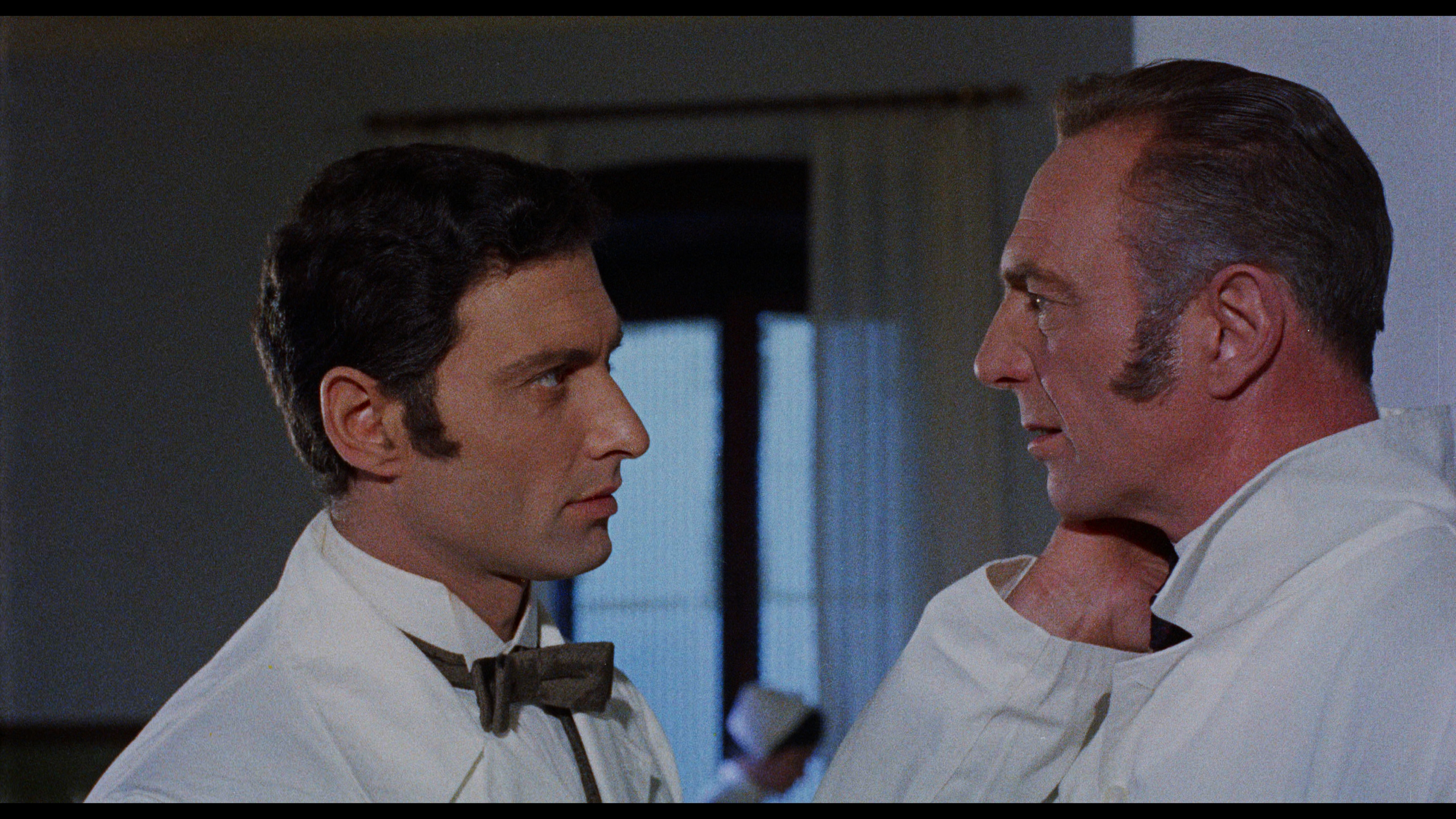
Radiance (Blu-ray)
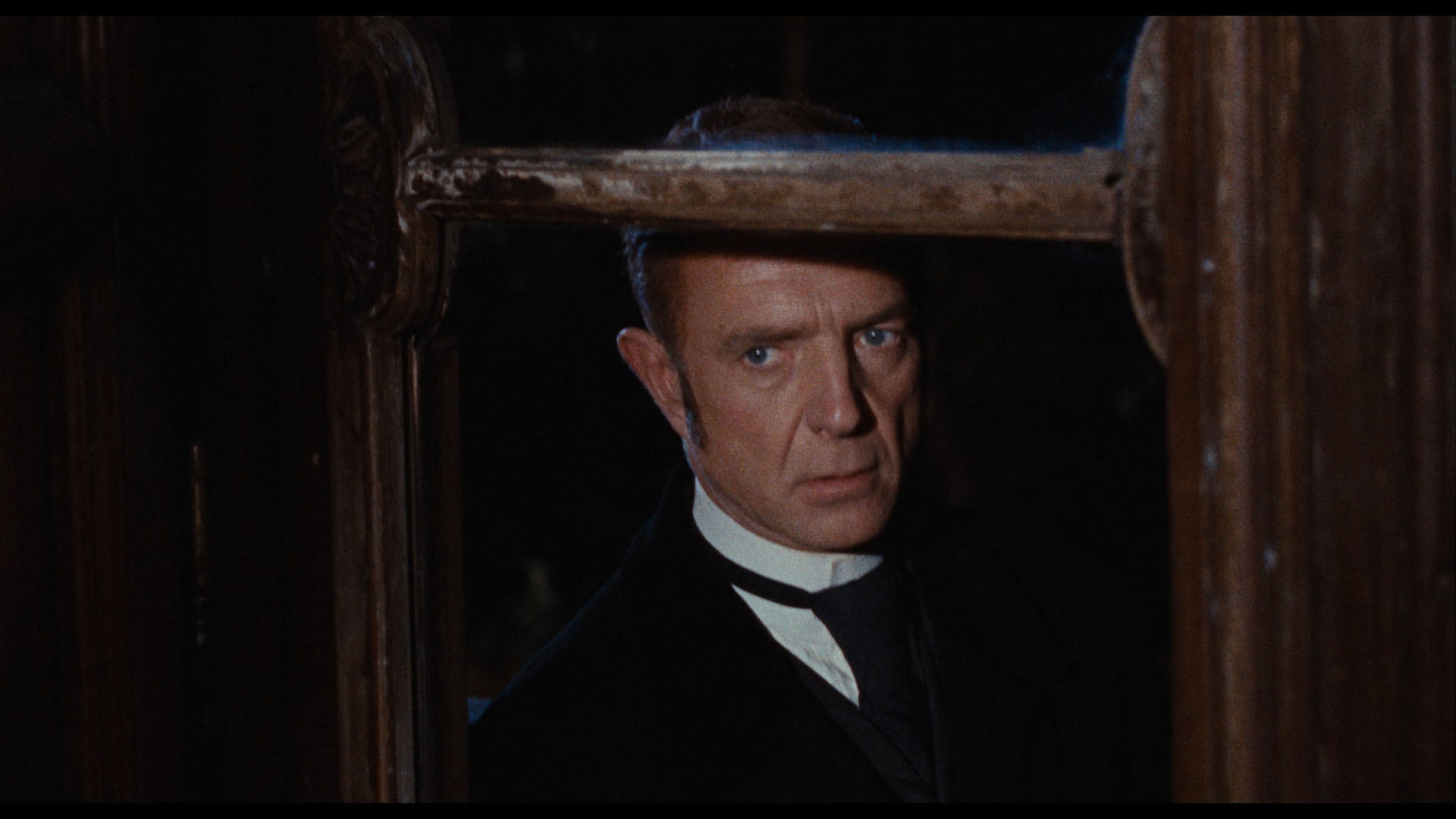
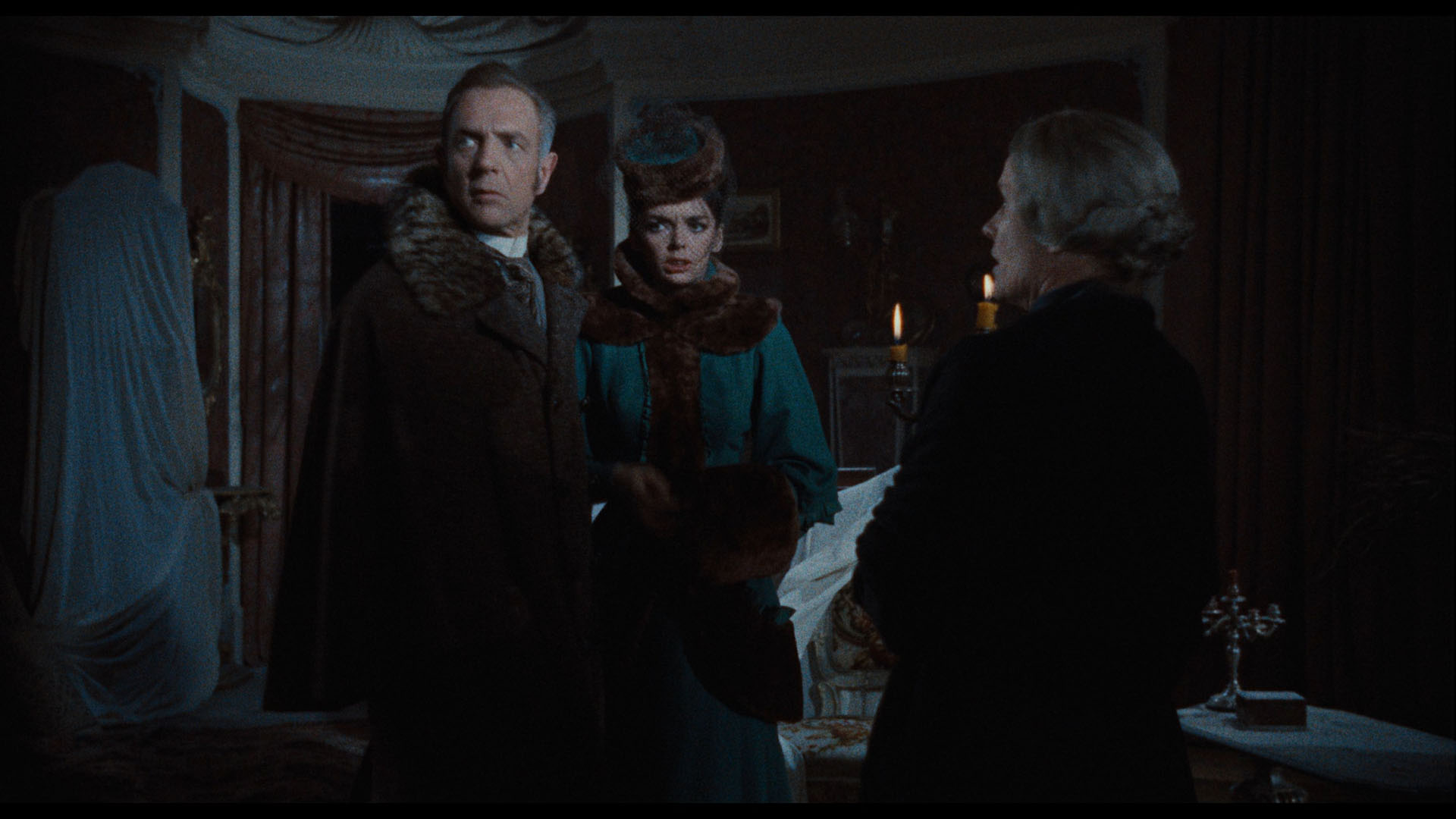
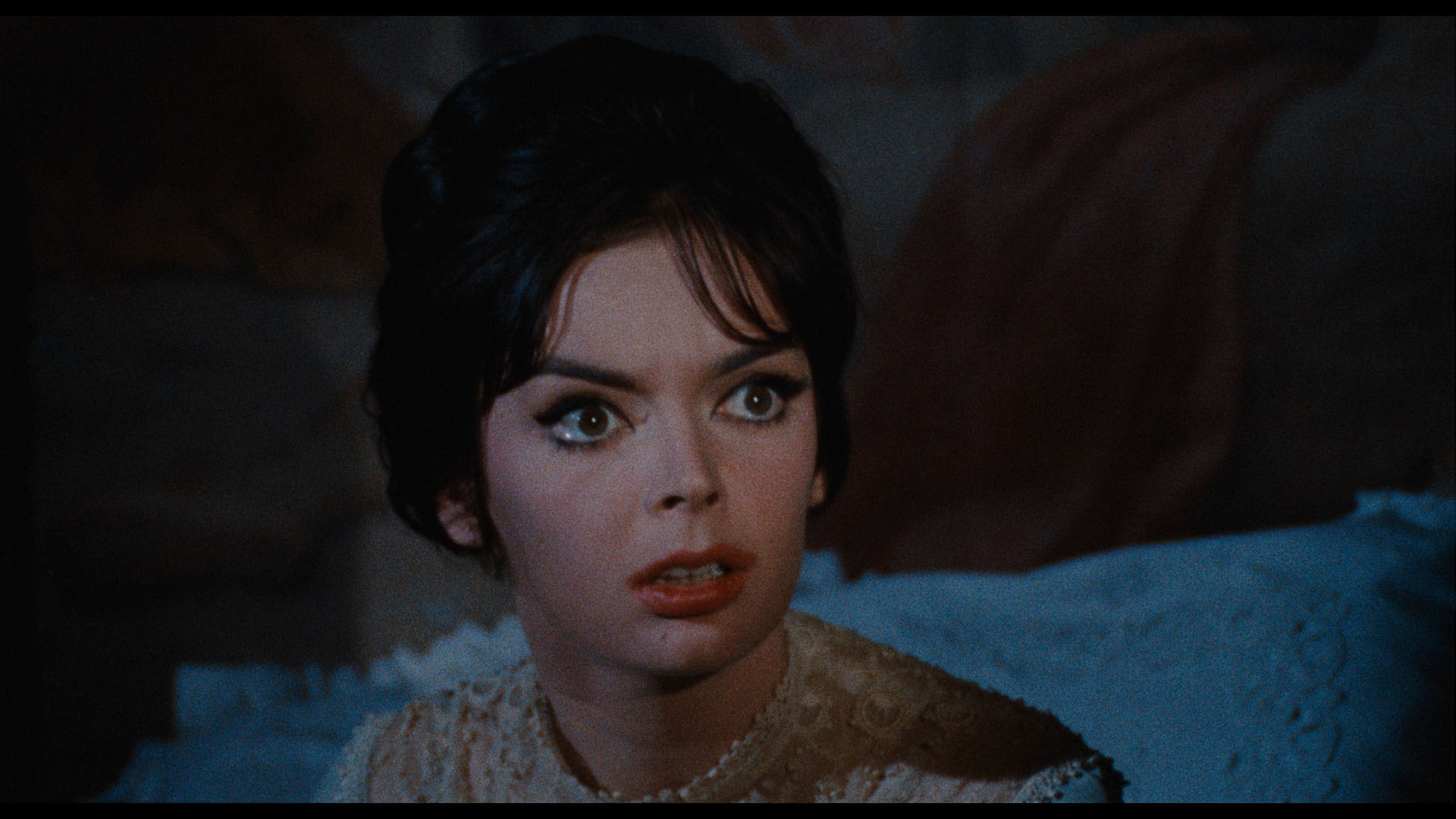
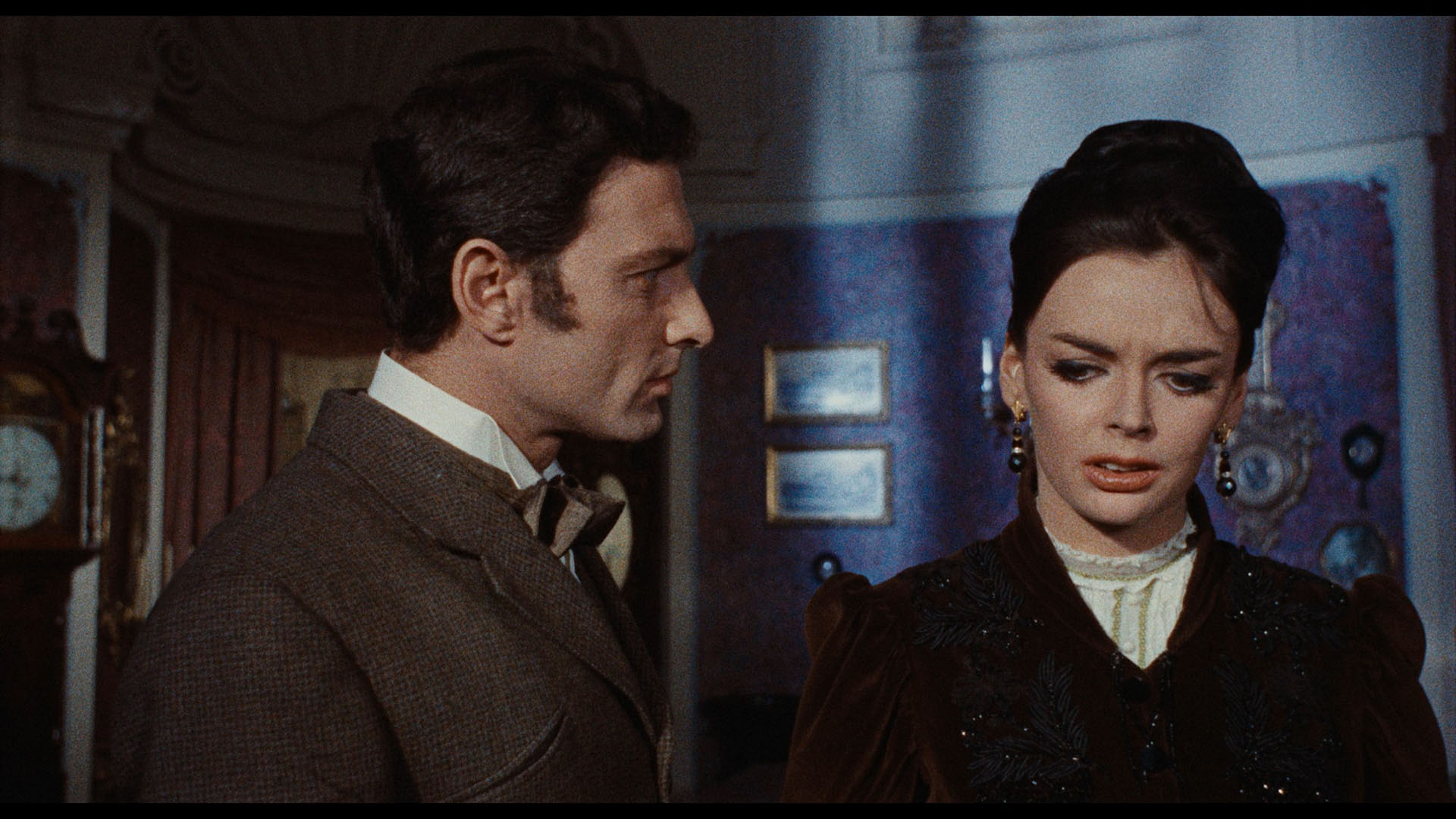
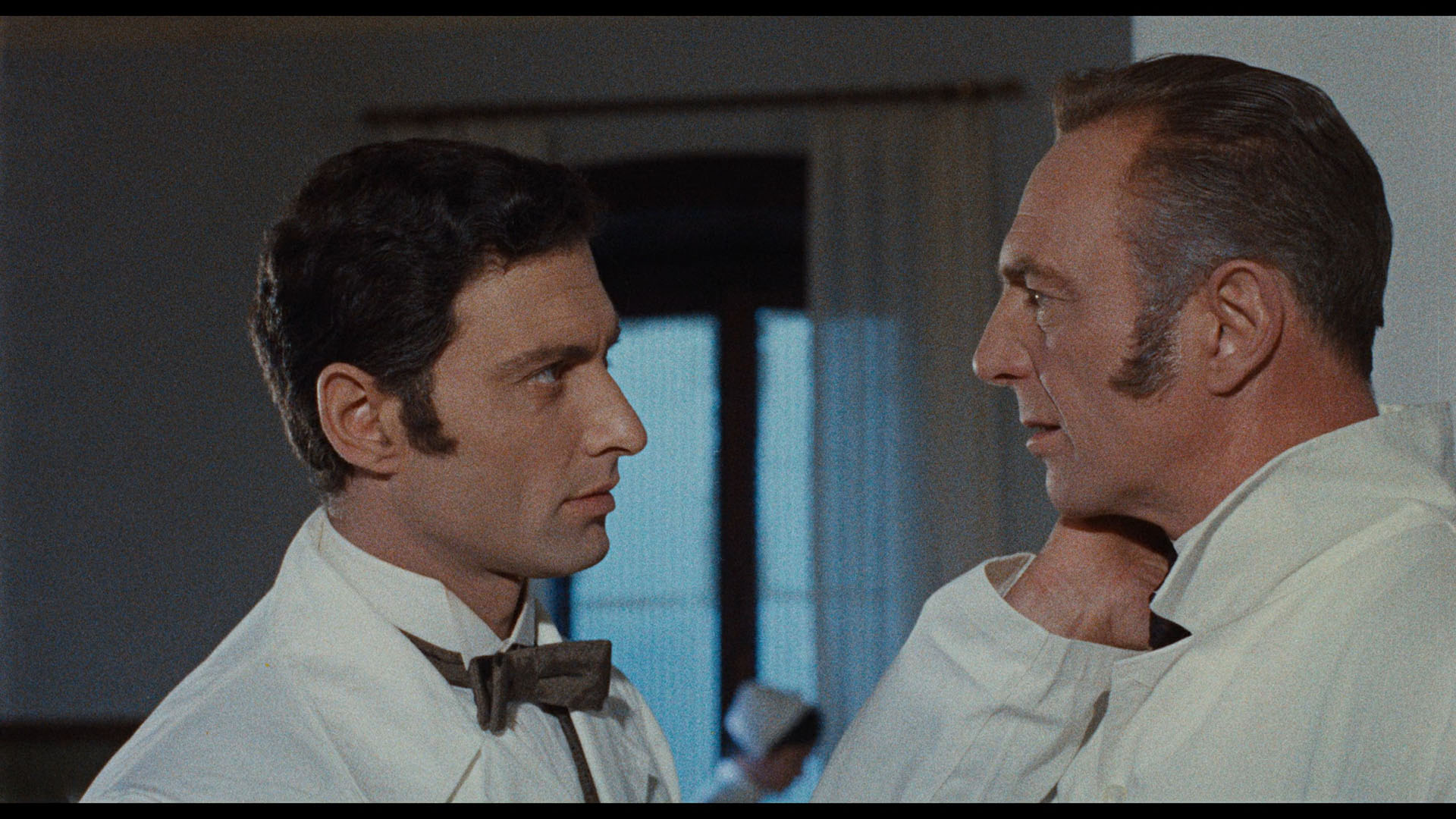
Ostalgica (Blu-ray)
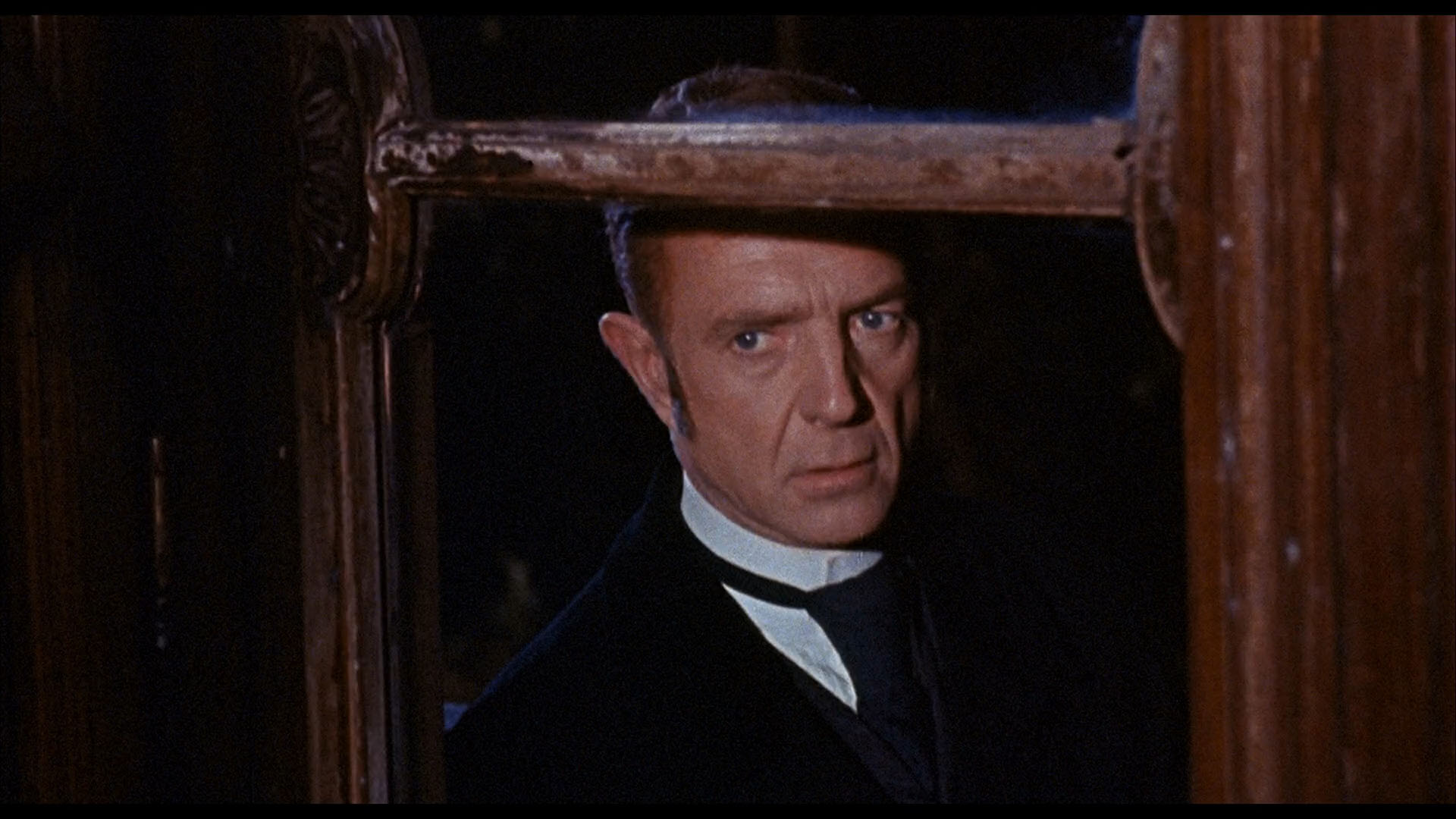
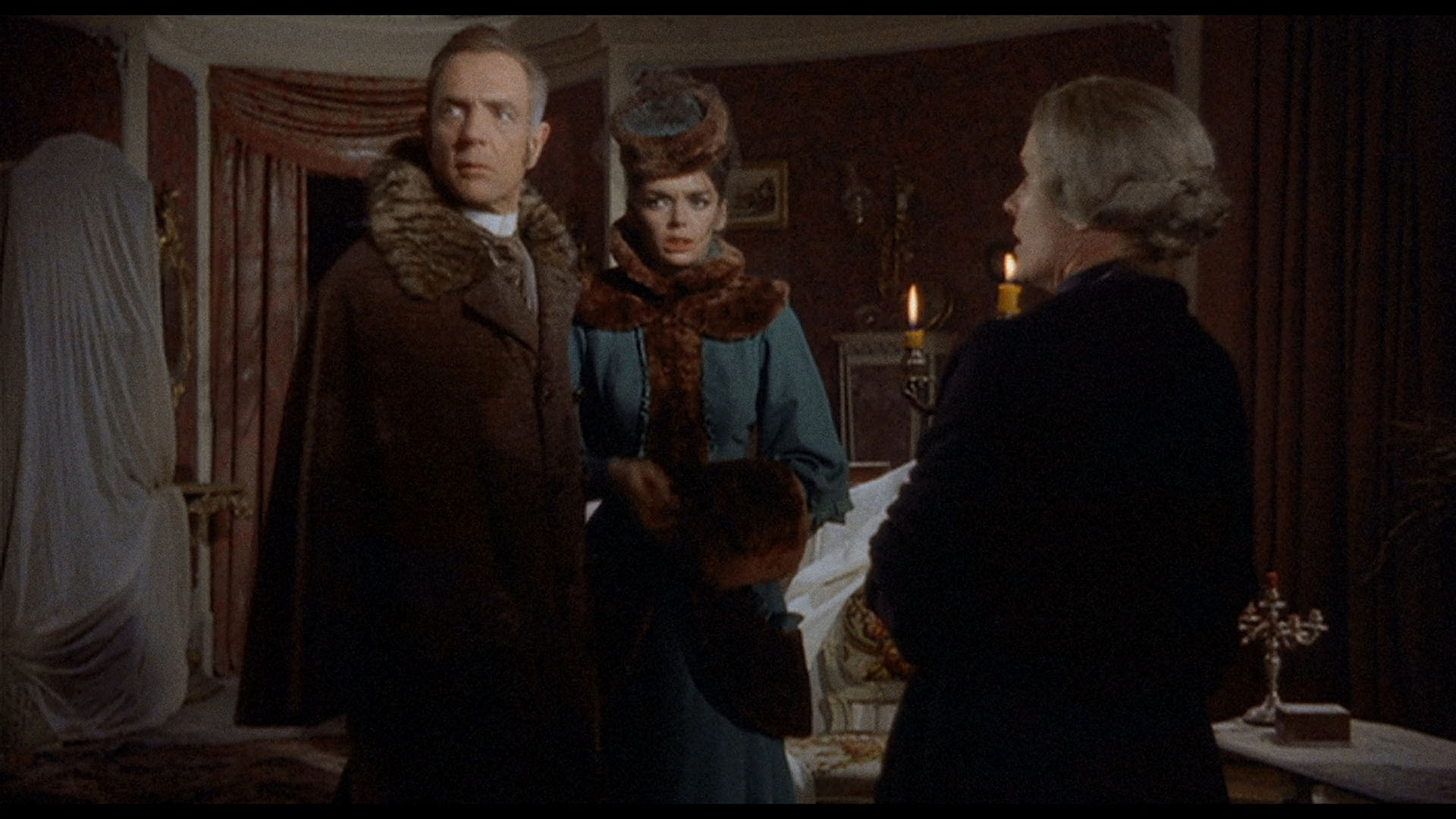
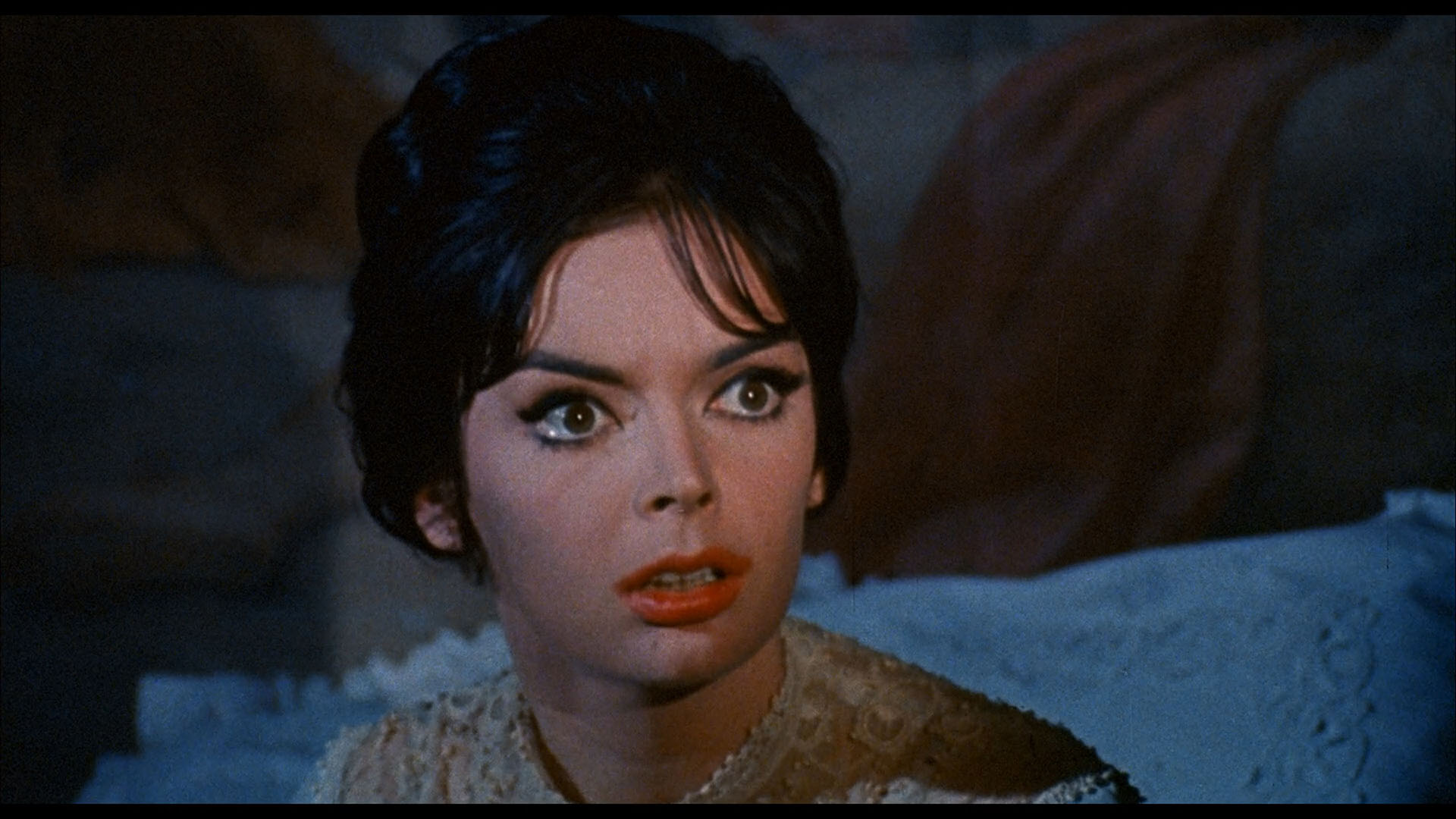
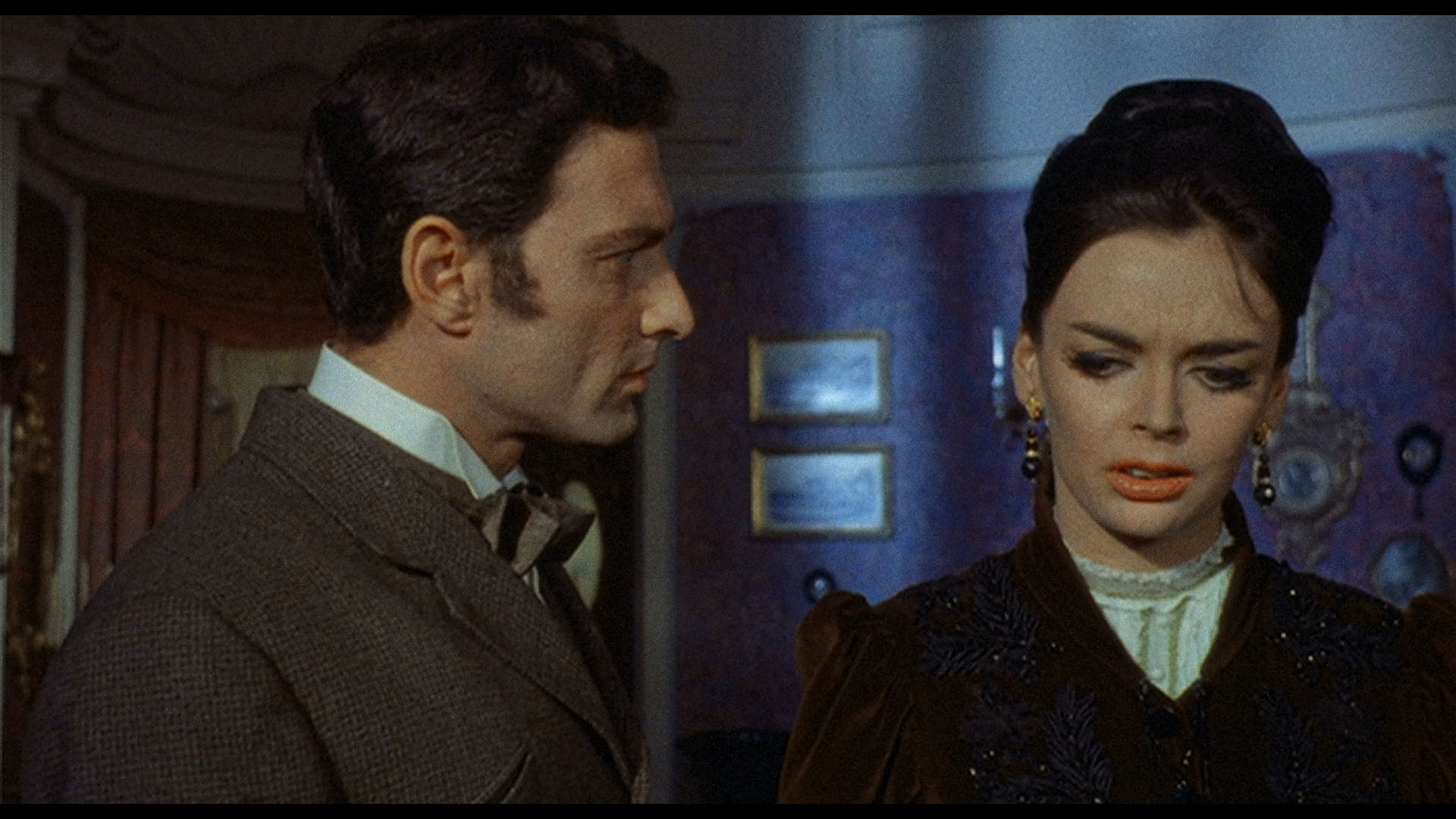
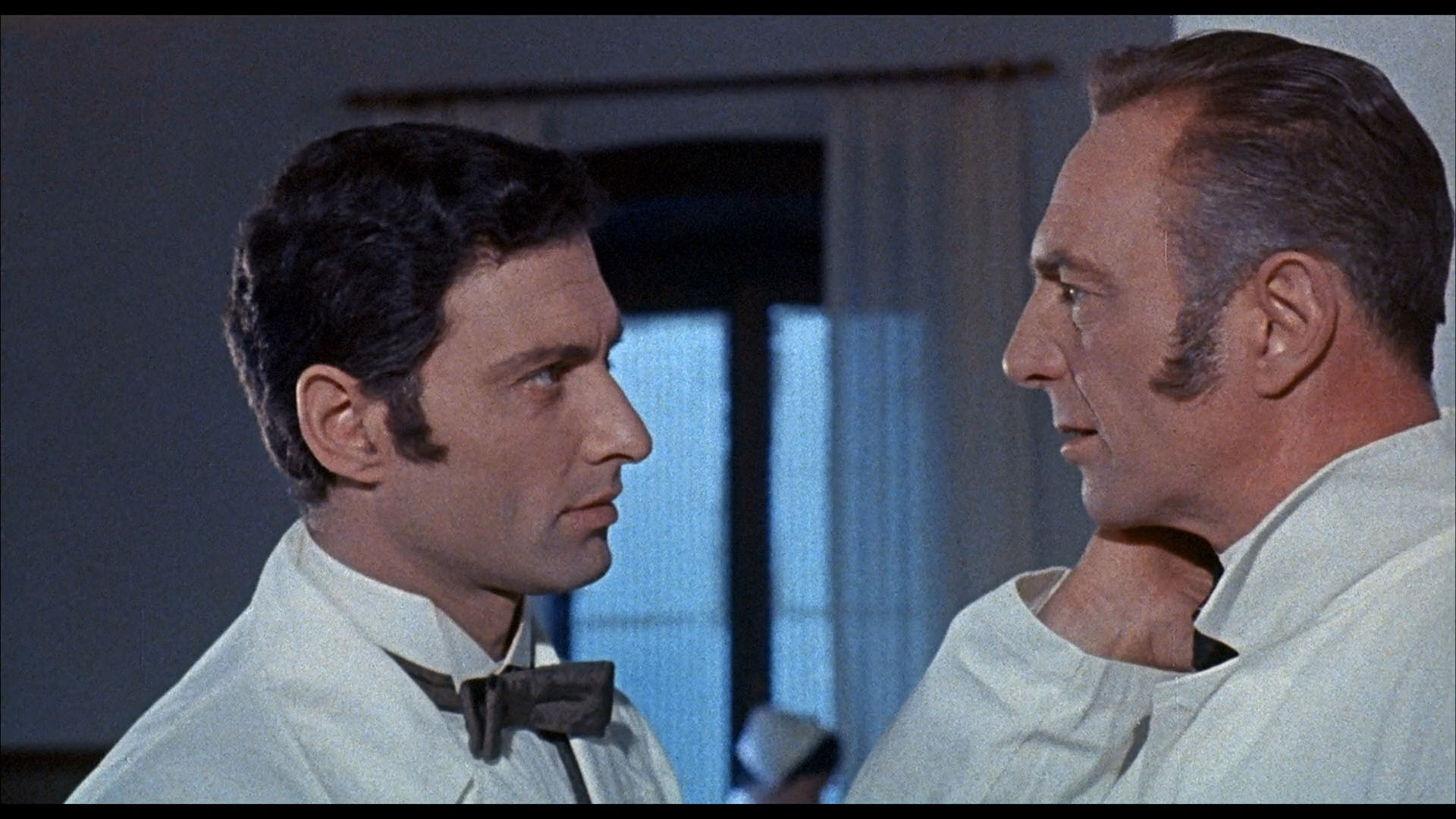
Updated review on February 11, 2024



 classic Italian Gothic horror wave, The Horrible Dr. Hichcock (originally L'Orribile
classic Italian Gothic horror wave, The Horrible Dr. Hichcock (originally L'Orribile  Segreto del Dr. Hichcock) is arguably the finest film by Riccardo Freda, an intermittent contributor to the genre who had kicked off the Italian horror genre in the sound era with I Vampiri. That film had featured major uncredited contributions by Mario Bava, the most important artist of Italian cinematic horror in the 1960s starting with Black Sunday, but Freda was on his heels by helming two films with that film's star, Barbara Steele (this one and its sort-of alternate universe sequel, The Ghost). Essentially updating the tried-and-true potboiler plot of a new bride finding out her husband has nefarious plans going on at night behind closed doors, Hichcock adds a relatively extreme new element by making its villain a necrophile whose antics made it an adults-only horror film at a time titles like these were aimed at younger audiences. The film was heavily streamlined by the time it reached U.S. theaters from short-lived company Sigma III on a glorious double feature with Jess Franco's The Awful Dr. Orlof, eventually going to Republic for TV which led to its current U.S. ownership by Paramount. The shortened U.S. cut was the default version most viewers could see until the uncut 87-minute version turned up on VHS from semi-PD company Sinister Cinema in the late '80s as The Terror of Dr. Hichcock, while written scholarship has piled up about this film in recent years cementing its status as a major work of dizzying, censorship-baiting opulent horror.
Segreto del Dr. Hichcock) is arguably the finest film by Riccardo Freda, an intermittent contributor to the genre who had kicked off the Italian horror genre in the sound era with I Vampiri. That film had featured major uncredited contributions by Mario Bava, the most important artist of Italian cinematic horror in the 1960s starting with Black Sunday, but Freda was on his heels by helming two films with that film's star, Barbara Steele (this one and its sort-of alternate universe sequel, The Ghost). Essentially updating the tried-and-true potboiler plot of a new bride finding out her husband has nefarious plans going on at night behind closed doors, Hichcock adds a relatively extreme new element by making its villain a necrophile whose antics made it an adults-only horror film at a time titles like these were aimed at younger audiences. The film was heavily streamlined by the time it reached U.S. theaters from short-lived company Sigma III on a glorious double feature with Jess Franco's The Awful Dr. Orlof, eventually going to Republic for TV which led to its current U.S. ownership by Paramount. The shortened U.S. cut was the default version most viewers could see until the uncut 87-minute version turned up on VHS from semi-PD company Sinister Cinema in the late '80s as The Terror of Dr. Hichcock, while written scholarship has piled up about this film in recent years cementing its status as a major work of dizzying, censorship-baiting opulent horror.  of his wife, Margaretha (Vianello). However, as we see from the opening moments, he has an extremely dark secret, namely his sexual fondness for the dead bodies of beautiful women. That includes surreptitious activities at work and his nocturnal
of his wife, Margaretha (Vianello). However, as we see from the opening moments, he has an extremely dark secret, namely his sexual fondness for the dead bodies of beautiful women. That includes surreptitious activities at work and his nocturnal  habit of drugging his wife with a powerful anesthetic he's developed that can simulate the absence of life. When one of their quasi-funeral bedroom sessions goes awry, Hichcock buries his wife and spends over a decade away from home. He only returns upon marrying the young Cynthia (Steele), who has been a nervous wreck since the death of her father, and she's understandably apprehensive about living in a mansion with a sneaky necrophile husband and an equally unsettling housekeeper (Medin). Meanwhile Cynthia finds support from another doctor, the handsome and younger Dr. Kurt Lowe (Castle of Blood's Tranquilli), or Dr. Lang depending which version you watch. Fearing her husband might be trying to bump her off, Cynthia eventually comes to realize that something even more twisted could be in store for her...
habit of drugging his wife with a powerful anesthetic he's developed that can simulate the absence of life. When one of their quasi-funeral bedroom sessions goes awry, Hichcock buries his wife and spends over a decade away from home. He only returns upon marrying the young Cynthia (Steele), who has been a nervous wreck since the death of her father, and she's understandably apprehensive about living in a mansion with a sneaky necrophile husband and an equally unsettling housekeeper (Medin). Meanwhile Cynthia finds support from another doctor, the handsome and younger Dr. Kurt Lowe (Castle of Blood's Tranquilli), or Dr. Lang depending which version you watch. Fearing her husband might be trying to bump her off, Cynthia eventually comes to realize that something even more twisted could be in store for her... The home video history of this film is a peculiar one, with both the U.S. and European cuts issued on VHS unofficially
The home video history of this film is a peculiar one, with both the U.S. and European cuts issued on VHS unofficially  and a tape eventually put out officially by Republic. A French DVD in 2010 was a visual step up but had no English-friendly options, while a 2016 Blu-ray from Olive Films via licensor Paramount only contained the shorter U.S. cut from an okay film source. It's worth noting though that the U.S. version has its points of interest in the way it shuffles the footage around (including the very opening seconds) and integrates what may be outtake footage from the original shoot. A 2018 Blu-ray and DVD combo edition from Ostalgica in Germany featured the German and Italian audio tracks with optional German subtitles, plus German audio commentary by Lars Dreyer-Winkelmann, a "Features of the Gothic" featurette (27m7s), a 4-minute gallery, and the Italian and French trailers. One big plus in this release's favor is the fact that it includes a soundtrack CD of Vlad's score (33 tracks, 59 mins.), which is unavailable anywhere else.
and a tape eventually put out officially by Republic. A French DVD in 2010 was a visual step up but had no English-friendly options, while a 2016 Blu-ray from Olive Films via licensor Paramount only contained the shorter U.S. cut from an okay film source. It's worth noting though that the U.S. version has its points of interest in the way it shuffles the footage around (including the very opening seconds) and integrates what may be outtake footage from the original shoot. A 2018 Blu-ray and DVD combo edition from Ostalgica in Germany featured the German and Italian audio tracks with optional German subtitles, plus German audio commentary by Lars Dreyer-Winkelmann, a "Features of the Gothic" featurette (27m7s), a 4-minute gallery, and the Italian and French trailers. One big plus in this release's favor is the fact that it includes a soundtrack CD of Vlad's score (33 tracks, 59 mins.), which is unavailable anywhere else. this track evolved from
this track evolved from  what was intended to be an updating of his original Video Watchdog article about the variant versions of the film, here delivering his greatly expanded 25-page study as a track packed with detailed info about Gastaldi's written novelization versus the two release versions. He also posits a fascinating theory behind what might have been the attraction that led our unhappy couple to tie the knot. A new interview with Gastaldi (34m19s) covers his initial early collaborations with Freda, the speedy writing of the script, his own take on the inspiration for the necrophilia aspect (disputed elsewhere by Freda), and the difference in color horror films here versus the more common monochrome that went in and out during the decade. In "Murderous Husbands: Bluebeard and the Gothic Melodrama" (28m17s), Miranda Corcoran presents a video essay about the Bluebeard story and its various incarnations throughout Gothic film including '40s melodramas like Gaslight and Jane Eyre before parsing out its influence on this film. Finally an interview with Madeleine Le Despencer looks at the confluence of necrophilia and Gothic narratives in this film, The Monk, and others, as well as mortuary chic in 19th-century Europe. Also included are a gallery of international poster art and a subtitled Italian trailer, while the package comes with an insert booklet featuring a new essay by Chris Fujiwara, an archival article by the late Alan Y. Upchurch, Lucas and Luigi Boscaino featuring interviews with Freda, Steele, Flemyng and others, and a critical overview by Cullen Gallagher.
what was intended to be an updating of his original Video Watchdog article about the variant versions of the film, here delivering his greatly expanded 25-page study as a track packed with detailed info about Gastaldi's written novelization versus the two release versions. He also posits a fascinating theory behind what might have been the attraction that led our unhappy couple to tie the knot. A new interview with Gastaldi (34m19s) covers his initial early collaborations with Freda, the speedy writing of the script, his own take on the inspiration for the necrophilia aspect (disputed elsewhere by Freda), and the difference in color horror films here versus the more common monochrome that went in and out during the decade. In "Murderous Husbands: Bluebeard and the Gothic Melodrama" (28m17s), Miranda Corcoran presents a video essay about the Bluebeard story and its various incarnations throughout Gothic film including '40s melodramas like Gaslight and Jane Eyre before parsing out its influence on this film. Finally an interview with Madeleine Le Despencer looks at the confluence of necrophilia and Gothic narratives in this film, The Monk, and others, as well as mortuary chic in 19th-century Europe. Also included are a gallery of international poster art and a subtitled Italian trailer, while the package comes with an insert booklet featuring a new essay by Chris Fujiwara, an archival article by the late Alan Y. Upchurch, Lucas and Luigi Boscaino featuring interviews with Freda, Steele, Flemyng and others, and a critical overview by Cullen Gallagher.













